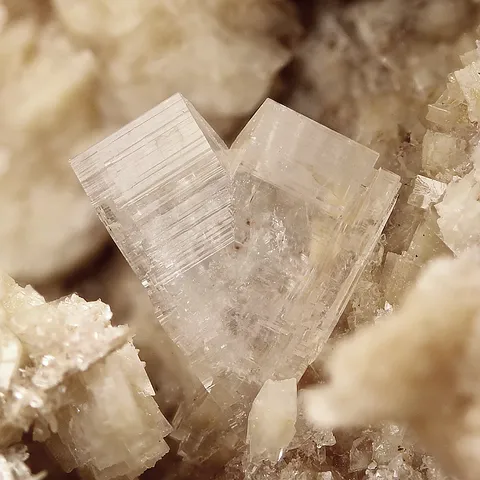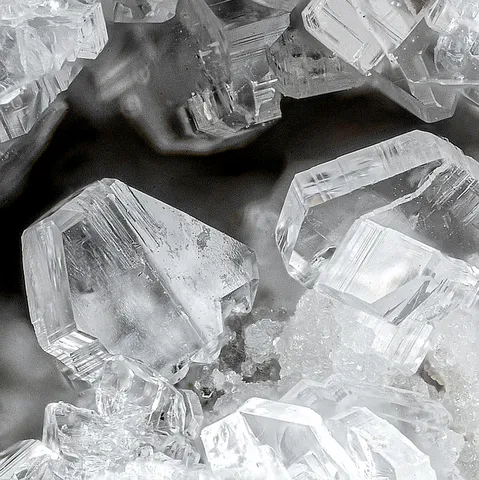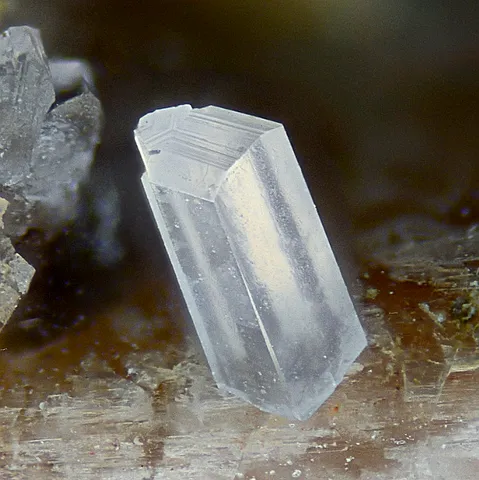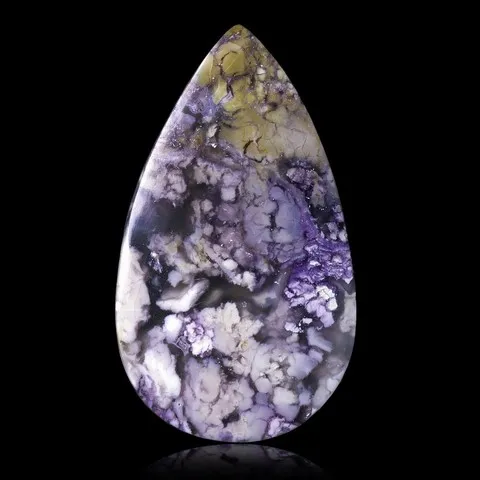BERTRANDITE
Class : Silicates
Subclass : Sorosilicates
Crystal System : Orthorhombic
Chemistry : Be4Si2O7(OH)2
Rarity : Uncommon
Bertrandite is a secondary beryllium silicate formed by weathering of beryl. Its name was given to it in honor of Emile Bertrand, mineralogist and mining engineer in Paris, who was the first to study this mineral. It is found in granites, granitic pegmatites as well as greisens and tin-tungsten veins, sometimes the miarolitic cavities of syenites. It is an accessory, but economically important, component of certain rhyolitic tuffs (Spor Mountain, Utah) where its exploitation currently makes it the main ore of beryllium, far ahead of beryl. Bertrandite forms small, elongated, flattened, sometimes lamellar orthorhombic crystals. "Gutter" twins are frequent and typical. Its luster is vitreous, pearly on the cleavages ; it is transparent, colorless, white or yellowish. It is frequently in contact with beryl, which it replaces, and can rub shoulders with phenakite, herderite or wolframite. Mixed with fluorite and opal, it is widely used as an ornamental or jewelry stone and called "Tiffany Stone" or "Tiffany Jasper".
Main photo : Bertrandite from Golconda, Minas Gerais, Brazil © Rob Lavinsky
Bertrandite in the World
Photo on the right : Nodule of bertrandite and fluorite (Tiffany stone) from Spor Mountain, Utah, USA © Rick Dalrymple
Twinning and special crystallizations
Twins are common on {011} and {021}, heart or V.
Fakes and treatments
No fake or treatment recorded for this mineral species, but can be confused with the stibine with which it shares the deposits.
Hardness : 6 to 7
Density : 2.6
Fracture : Conchoidal
Trace : White
TP : Translucent to transparent
RI : 1.591 to 1.614
Birefringence : 0.023
Optical character : Biaxial -
Pleochroism : None
Fluorescence : None
Solubility : Sulfuric acid, hydrofluoric acid and soda
Magnetism : None
Radioactivity : None






